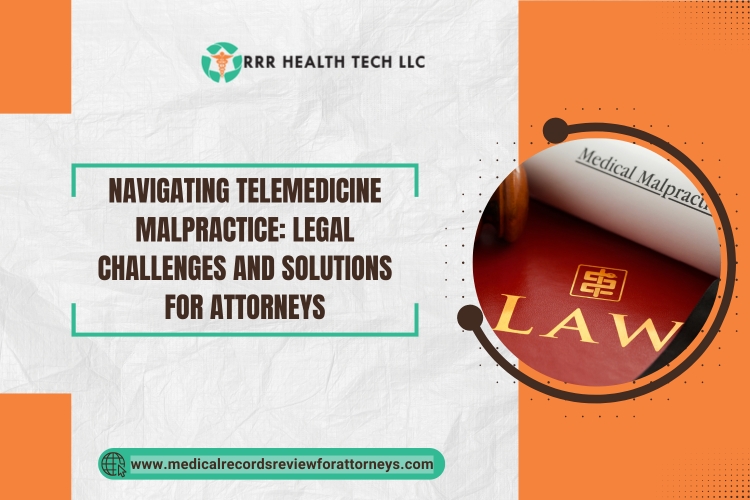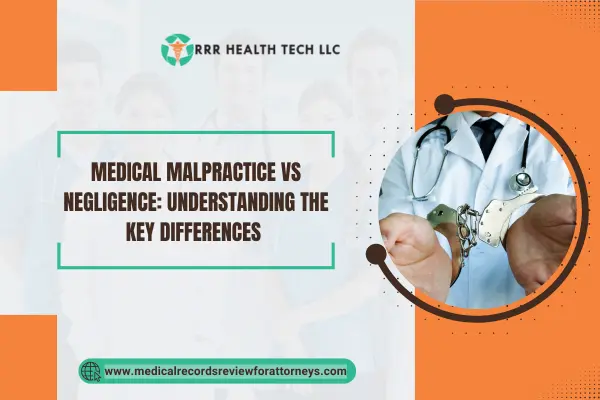
The world of healthcare has witnessed a revolution with the advent of telemedicine, especially during the COVID-19 pandemic when it surged telehealth visits. With rapid changes however comes a host of new issues, including telemedicine malpractice. As a company providing medical records review services to lawyers around the country, we need to highlight the problems that arise around telemedicine and how we can help solve them.
Understanding Telemedicine
What Is Telemedicine?
Telemedicine refers to the use of technology to provide medical care remotely. This includes:
• Virtual Consultations: Healthcare professionals schedule meetings with clients via video conferencing or phone calls.
• Remote Patient Monitoring: The ability to continually assess patients’ health using various digital technologies.
• Tele-Surgery: High-end specialized procedures performed remotely using robotic technology and high-resolution video cameras.
Types of Medical Care Provided Through Telemedicine
Telemedicine encompasses various services, including:
• Providing diagnosis for uncomplicated diseases like colds and infections.
• Prescription management.
• Delivery of laboratory test results.
• Aftercare services following outpatient treatment.
Legal Challenges in Telemedicine
Licensing and Regulatory Issues
• State Licenses: It is obligatory that the provider is licensed in the state where the patient resides which often complicates matters when consultations across state borders need to occur.
Prescribing Medications: The use of the Internet to assist with prescribing controlled substances is limited by The Ryan Height Act and state law that require an in-person clinical interaction with the patient.
Privacy and Security Concerns
- HIPAA Compliance: This is the need for telehealth service providers to secure all patient information considering the nature of their practice.
- Technological Risks: Data breach or unauthorized access risks during remote consultations.
Telehealth Malpractice Risks
Common Malpractice Issues
Misdiagnosis: Restricted physical examination opportunities contribute towards diagnostic mistakes.
Diagnoses Put On Hold: Patients are not treated in a timely manner based on the assumption the patient will be examined virtually.
Mistakes in Communication: Poor communication caused by technology obstruction can result in miscommunication.
Statistics on Telehealth Malpractice
- 67% of respondents aged 60 years and above advocated that telehealth was not as effective as face-to-face consultations.
- Claims associated with telemedicine medicine malpractice between 2014 and 2018 were two-thirds for cases of failure to diagnose a condition.
When Telemedicine Errors Might Be Medical Malpractice
Legal Elements of Malpractice
To establish a case for telemedicine malpractice, the following must be proven:
- A doctor-patient relationship existed.
- The provider deviated from the accepted standard of care.
- The deviation caused harm to the patient.
- The patient suffered damages as a result.
Who Is Responsible for Telemedicine Malpractice?
Potential Liable Parties
• Family doctors
• Other physicians
• Medical practices and hospitals
• X-ray and lab professionals
Compensation Recoverable in Medical Malpractice Cases
Types of Damages
Patients may recover various damages, including:
- Medical expenses for treatment of injuries caused by malpractice
- Lost wages and loss of earning capacity
- Pain and suffering
- Future medical expenses
What to Do If You Suspect Telemedicine Malpractice
Steps to Take
- Obtain Medical Files: Get a copy of your medical file, referrals, any prescriptions or notes, and treatment plans.
- Get Another Opinion: Speak to another doctor about your situation.
- Talk with a Lawyer Who Focuses on Medical Malpractice: Meet with an attorney who understands your area and will appreciate your case.
Case Studies
Case Study 1: Misdiagnosis in Telemedicine
Overview: A patient not only had headaches but also experienced considerable pain for a long time, so they visited a telehealth provider. The telehealth provider did not do a physical exam and instead diagnosed them with a sinus infection.
Challenges: The patient later developed a serious neurological condition because of the faulty diagnosis.
Solution: The patient did manage to get a better diagnosis through a different second opinion. The telehealth provider was sued and lost the court case.
Compensation: The patient was reimbursed for expenses related to treatment and pain and suffering.
Case Study 2: Delayed Diagnosis
Overview: One of the patients suffering from chest pain booked a remote consultation. The provider suggested that the patient symptoms be observed.
Challenges: The patient was diagnosed with a severe heart condition later on which required a lot of attention at that very moment.
Solutions: The provider faced a malpractice case due to a lack of necessary understanding that was required to take care of the symptoms.
Compensation: The patient was compensated for the incurred medical expenses and for work his was unable to perform.
Conclusion
There are clear advantages to telemedicine, but it also involves distinct legal issues. As a company that provides medical record reviews, we have a specific duty to help the attorneys manage such issues. Understanding the liability aspects of telehealth will allow us to assist our clients and ensure that patients get the appropriate attention.


